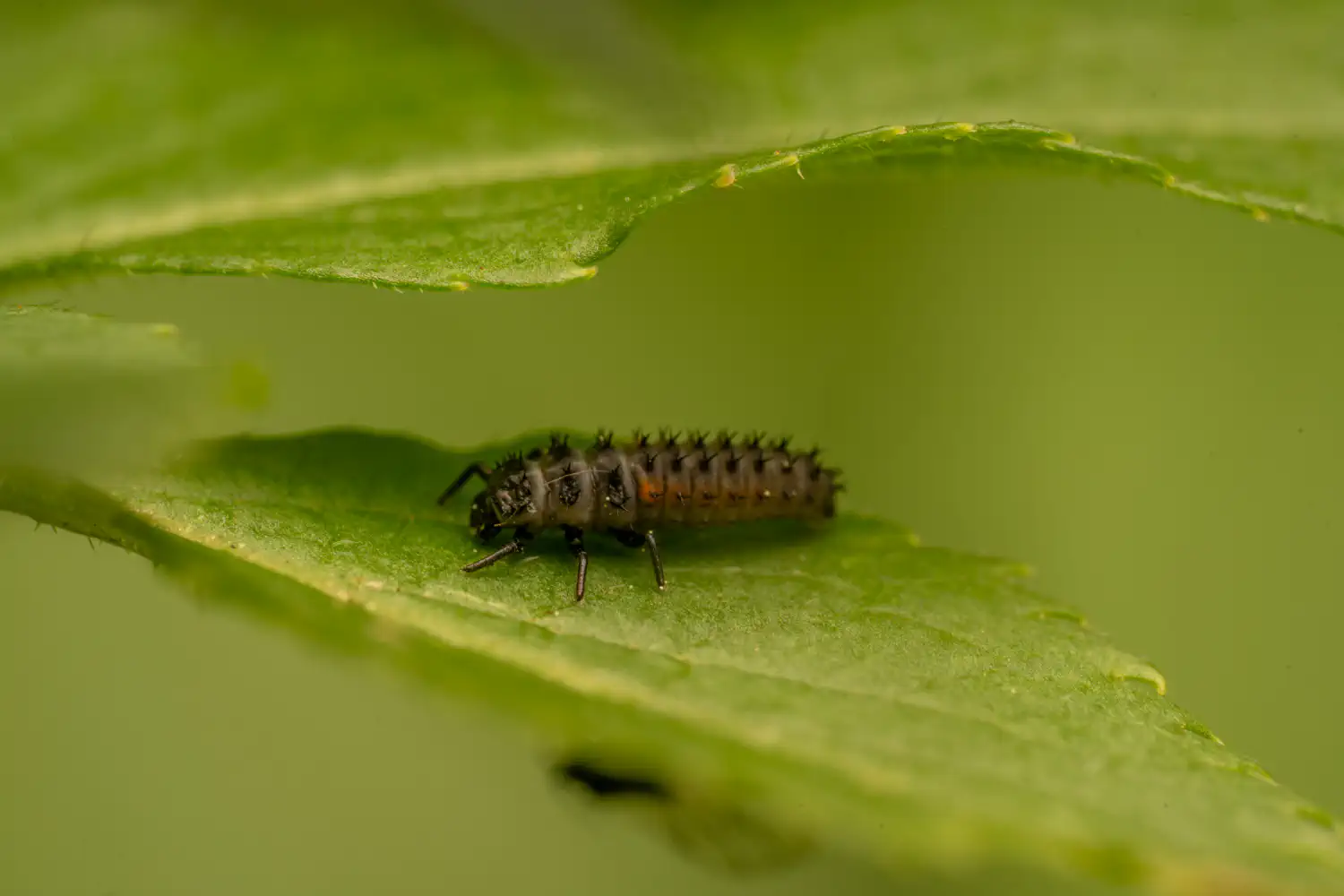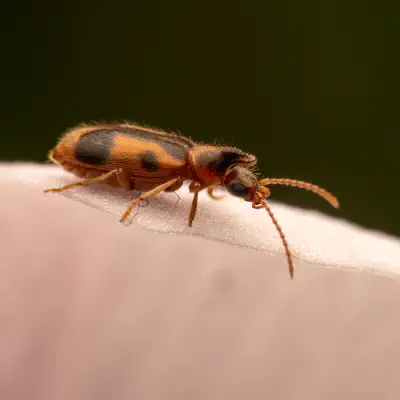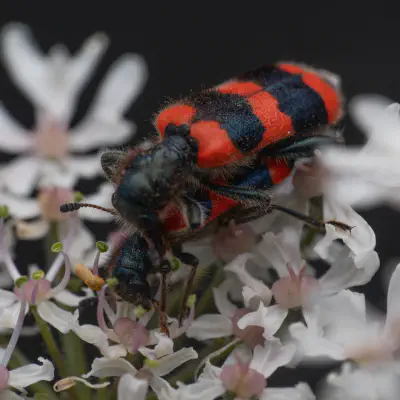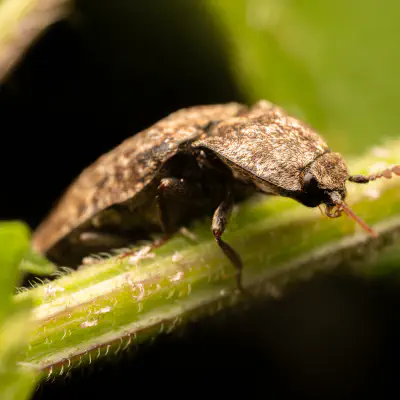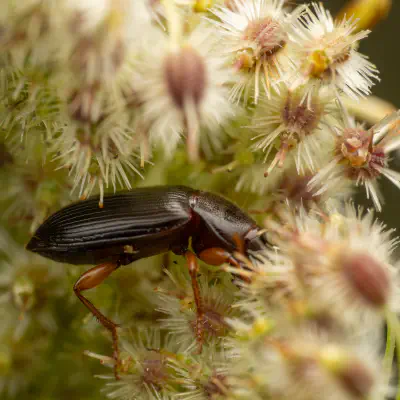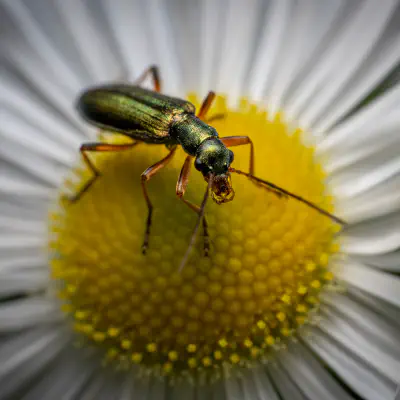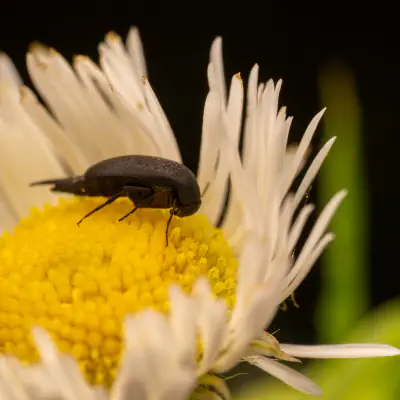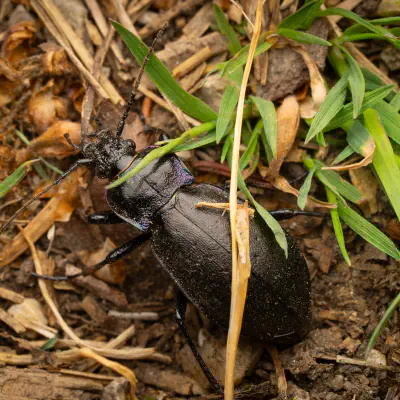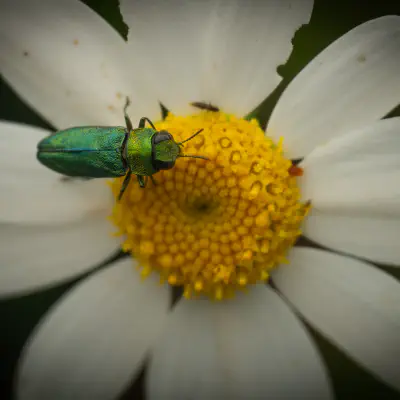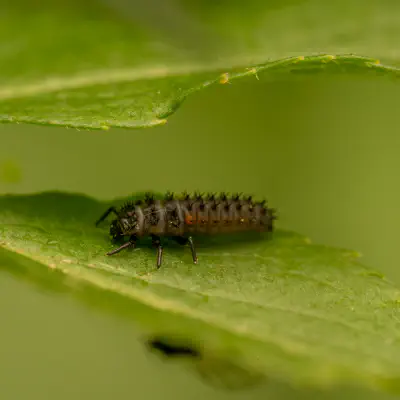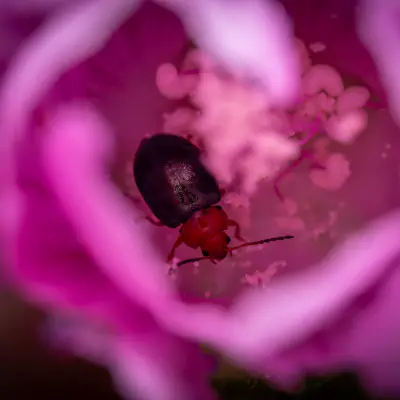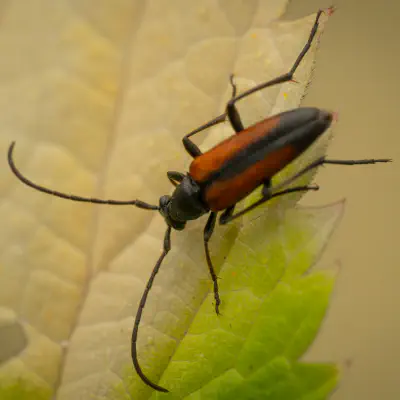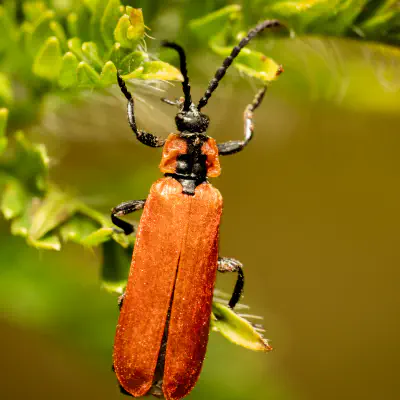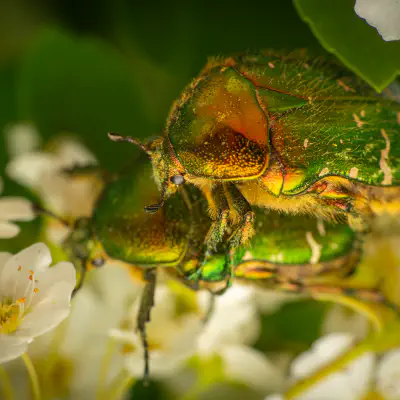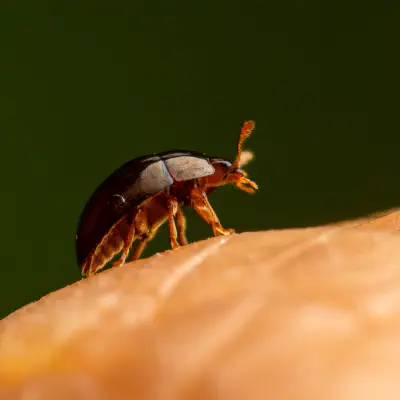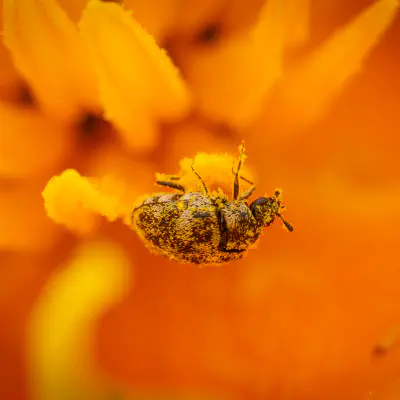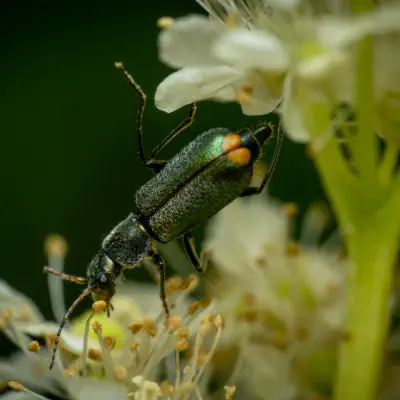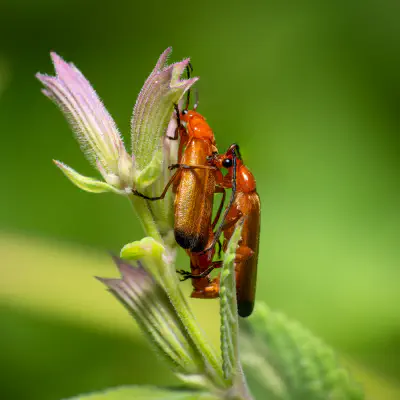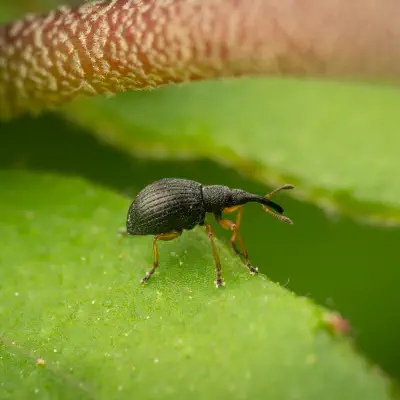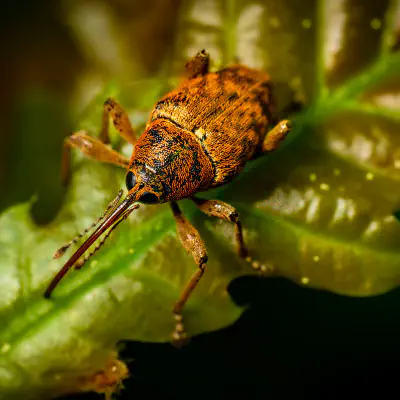Beetles Lat. “Coleoptera“
Beetles are a group of insects that form the order Coleoptera, in the superorder Endopterygota. Their front pair of wings is hardened into wing-cases, elytra, distinguishing them from most other insects. The Coleoptera, with about 400,000 species, is the largest of all orders, constituting almost 40% of described insects and 25% of all known animal life-forms; new species are discovered frequently. The largest of all families, the Curculionidae (weevils) with some 70,000 member species, belongs to…
Hierarchy
Etymology
The name of the taxonomic order, Coleoptera, comes from the Greek koleopteros (κολεόπτερος), given to the group by Aristotle for their elytra, hardened shield-like forewings, from koleos, sheath, and pteron, wing. The English name beetle comes from the Old English word bitela, little biter, related to bītan (to bite), leading to Middle English betylle. Another Old English name for beetle is ċeafor, chafer, used in names such as cockchafer, from the Proto-Germanic *kebrô (“beetle”; compare German Käfer, Dutch kever, Afrikaans kewer).
Distribution and diversity
Beetles are by far the largest order of insects: the roughly 400,000 species make up about 40% of all arthropod species so far described, and about 25% of all animal species. A 2015 study provided four independent estimates of the total number of beetle species, giving a mean estimate of some 1.5 million with a “surprisingly narrow range” spanning all four estimates from a minimum of 0.9 to a maximum of 2.1 million beetle species. The four estimates made use of host-specificity relationships (1.5 to 1.9 million), ratios with other taxa (0.9 to 1.2 million), plant:beetle ratios (1.2 to 1.3), and extrapolations based on body size by year of description (1.7 to 2.1 million). This immense diversity led the evolutionary biologist J. B. S. Haldane to quip, when some theologians asked him what could be inferred about the mind of the Christian God from the works of His Creation, “An inordinate fondness for beetles”. However, the ranking of beetles as most diverse has been challenged. Multiple studies posit that Diptera (flies) and/or Hymenoptera (sawflies, wasps, ants and bees) may have more species. Beetles are found in nearly all habitats, including freshwater and coastal habitats, wherever vegetative foliage is found, from trees and their bark to flowers, leaves, and underground near roots - even inside plants in galls, in every plant tissue, including dead or decaying ones. Tropical forest canopies have a large and diverse fauna of beetles, including Carabidae, Chrysomelidae, and Scarabaeidae. The heaviest beetle, indeed the heaviest insect stage, is the larva of the goliath beetle, Goliathus goliatus, which can attain a mass of at least 115 g (4.1 oz) and a length of 11.5 cm (4.5 in). Adult male goliath beetles are the heaviest beetle in its adult stage, weighing 70–100 g (2.5–3.5 oz) and measuring up to 11 cm (4.3 in). Adult elephant beetles, Megasoma elephas and Megasoma actaeon often reach 50 g (1.8 oz) and 10 cm (3.9 in). The longest beetle is the Hercules beetle Dynastes hercules, with a maximum overall length of at least 16.7 cm (6.6 in) including the very long pronotal horn. The smallest recorded beetle and the smallest free-living insect (as of 2015), is the featherwing beetle Scydosella musawasensis which may measure as little as 325 μm in length.
Phylogeny
The very large number of beetle species poses special problems for classification. Some families contain tens of thousands of species, and need to be divided into subfamilies and tribes. Polyphaga is the largest suborder, containing more than 300,000 described species in more than 170 families, including rove beetles (Staphylinidae), scarab beetles (Scarabaeidae), blister beetles (Meloidae), stag beetles (Lucanidae) and true weevils (Curculionidae). These polyphagan beetle groups can be identified by the presence of cervical sclerites (hardened parts of the head used as points of attachment for muscles) absent in the other suborders. Adephaga contains about 10 families of largely predatory beetles, includes ground beetles (Carabidae), water beetles (Dytiscidae) and whirligig beetles (Gyrinidae). In these insects, the testes are tubular and the first abdominal sternum (a plate of the exoskeleton) is divided by the hind coxae (the basal joints of the beetle’s legs). Archostemata contains four families of mainly wood-eating beetles, including reticulated beetles (Cupedidae) and the telephone-pole beetle. The Archostemata have an exposed plate called the metatrochantin in front of the basal segment or coxa of the hind leg. Myxophaga contains about 65 described species in four families, mostly very small, including Hydroscaphidae and the genus Sphaerius. The myxophagan beetles are small and mostly alga-feeders. Their mouthparts are characteristic in lacking galeae and having a mobile tooth on their left mandible. The consistency of beetle morphology, in particular their possession of elytra, has long suggested that Coleoptera is monophyletic, though there have been doubts about the arrangement of the suborders, namely the Adephaga, Archostemata, Myxophaga and Polyphaga within that clade. The twisted-wing parasites, Strepsiptera, are thought to be a sister group to the beetles, having split from them in the Early Permian. Molecular phylogenetic analysis confirms that the Coleoptera are monophyletic. Duane McKenna et al. (2015) used eight nuclear genes for 367 species from 172 of 183 Coleopteran families. They split the Adephaga into 2 clades, Hydradephaga and Geadephaga, broke up the Cucujoidea into 3 clades, and placed the Lymexyloidea within the Tenebrionoidea. The Polyphaga appear to date from the Triassic. Most extant beetle families appear to have arisen in the Cretaceous. The cladogram is based on McKenna (2015). The number of species in each group (mainly superfamilies) is shown in parentheses, and boldface if over 10,000. English common names are given where possible. Dates of origin of major groups are shown in italics in millions of years ago (mya).
External morphology
Beetles are generally characterized by a particularly hard exoskeleton and hard forewings (elytra) not usable for flying. Almost all beetles have mandibles that move in a horizontal plane. The mouthparts are rarely suctorial, though they are sometimes reduced; the maxillae always bear palps. The antennae usually have 11 or fewer segments, except in some groups like the Cerambycidae (longhorn beetles) and the Rhipiceridae (cicada parasite beetles). The coxae of the legs are usually located recessed within a coxal cavity. The genitalic structures are telescoped into the last abdominal segment in all extant beetles. Beetle larvae can often be confused with those of other holometabolan groups. The beetle’s exoskeleton is made up of numerous plates, called sclerites, separated by thin sutures. This design provides armored defenses while maintaining flexibility. The general anatomy of a beetle is quite uniform, although specific organs and appendages vary greatly in appearance and function between the many families in the order. Like all insects, beetles’ bodies are divided into three sections: the head, the thorax, and the abdomen. Because there are so many species, identification is quite difficult, and relies on attributes including the shape of the antennae, the tarsal formulae and shapes of these small segments on the legs, the mouthparts, and the ventral plates (sterna, pleura, coxae). In many species accurate identification can only be made by examination of the unique male genitalic structures.
Reproduction and development
Beetles are members of the superorder Holometabola, and accordingly most of them undergo complete metamorphosis. The typical form of metamorphosis in beetles passes through four main stages: the egg, the larva, the pupa, and the imago or adult. The larvae are commonly called grubs and the pupa sometimes is called the chrysalis. In some species, the pupa may be enclosed in a cocoon constructed by the larva towards the end of its final instar. Some beetles, such as typical members of the families Meloidae and Rhipiphoridae, go further, undergoing hypermetamorphosis in which the first instar takes the form of a triungulin.
See also
Beetle Monuments
Further reading
Beckmann, Poul (2001). Living Jewels: The Natural Design of Beetles. Prestel. ISBN 978-3-7913-2528-6. Cooter, J.; M. V. L. Barclay, eds. (2006). A Coleopterist’s Handbook. Amateur Entomological Society. ISBN 978-0-900054-70-9. Beetle Larvae of the World. Entomological Society of America. December 1994. ISBN 978-0-643-05506-3. Grimaldi, David; Michael S. Engel (May 16, 2005). Evolution of the Insects. Cambridge University Press. ISBN 978-0-521-82149-0. Harde, K. W. (1984). A Field Guide in Color to Beetles. Octopus Books. pp. 7–24. ISBN 978-0-7064-1937-5. White, R. E. (1983). Beetles. Houghton Mifflin. ISBN 978-0-395-91089-4.
External links
Coleoptera from the Tree of Life Web Project (in German) Käfer der Welt Coleoptera Atlas Archived January 6, 2014, at the Wayback Machine Beetles – Coleoptera
Ancestry Graph
Further Information
Copyright

This article uses material from the Wikipedia article Coleoptera the free encyclopedia Wikipedia which is released under Creative Commons Attribution-ShareAlike 4.0 International License). On Wikipedia a list of authors is available.

Little beings in print
Order our calendars and books today!
Compiled with love. Printed sustainably. Experience our little beings even more vividly in print. All our publications are available for a small donation.

